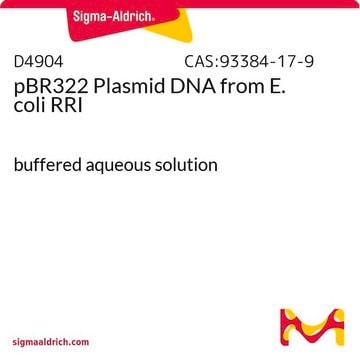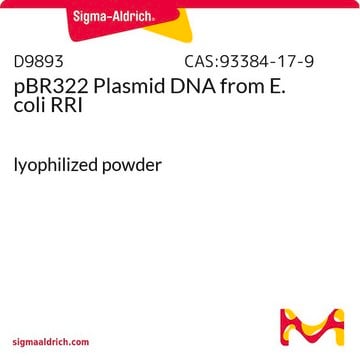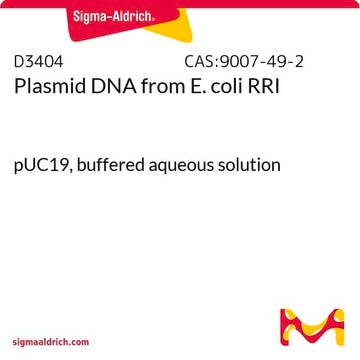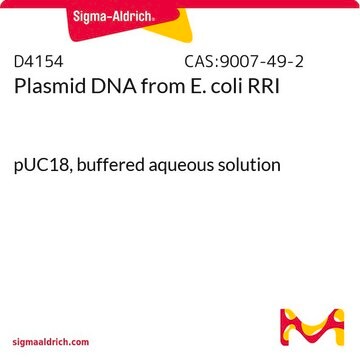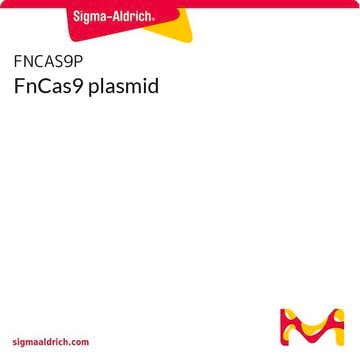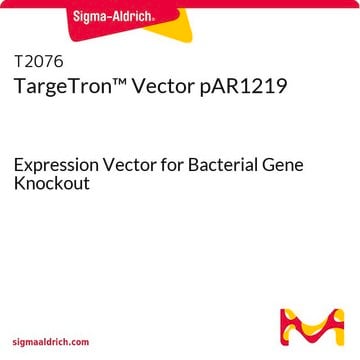OGS589
PBR322 - PBR322 LOW COPY CLONING VECTOR
plasmid vector for molecular cloning
Sinónimos:
cloning vector, expression vector, molecular cloning vector, plasmid, plasmid vector, snapfast vector, vector
About This Item
Productos recomendados
Formulario
buffered aqueous solution
mol peso
size 4361 bp
selección de bacterias
ampicillin
Origen de replicación
BR322 (15 copies)
Escisión peptídica
no cleavage
gen reportero
none
Condiciones de envío
ambient
temp. de almacenamiento
−20°C
Descripción general
Promoter Expression Level:
Aplicación
Secuencia
Nota de análisis
Producto relacionado
Código de clase de almacenamiento
12 - Non Combustible Liquids
Punto de inflamabilidad (°F)
Not applicable
Punto de inflamabilidad (°C)
Not applicable
Elija entre una de las versiones más recientes:
Certificados de análisis (COA)
It looks like we've run into a problem, but you can still download Certificates of Analysis from our Documentos section.
Si necesita más asistencia, póngase en contacto con Atención al cliente
¿Ya tiene este producto?
Encuentre la documentación para los productos que ha comprado recientemente en la Biblioteca de documentos.
Nuestro equipo de científicos tiene experiencia en todas las áreas de investigación: Ciencias de la vida, Ciencia de los materiales, Síntesis química, Cromatografía, Analítica y muchas otras.
Póngase en contacto con el Servicio técnico